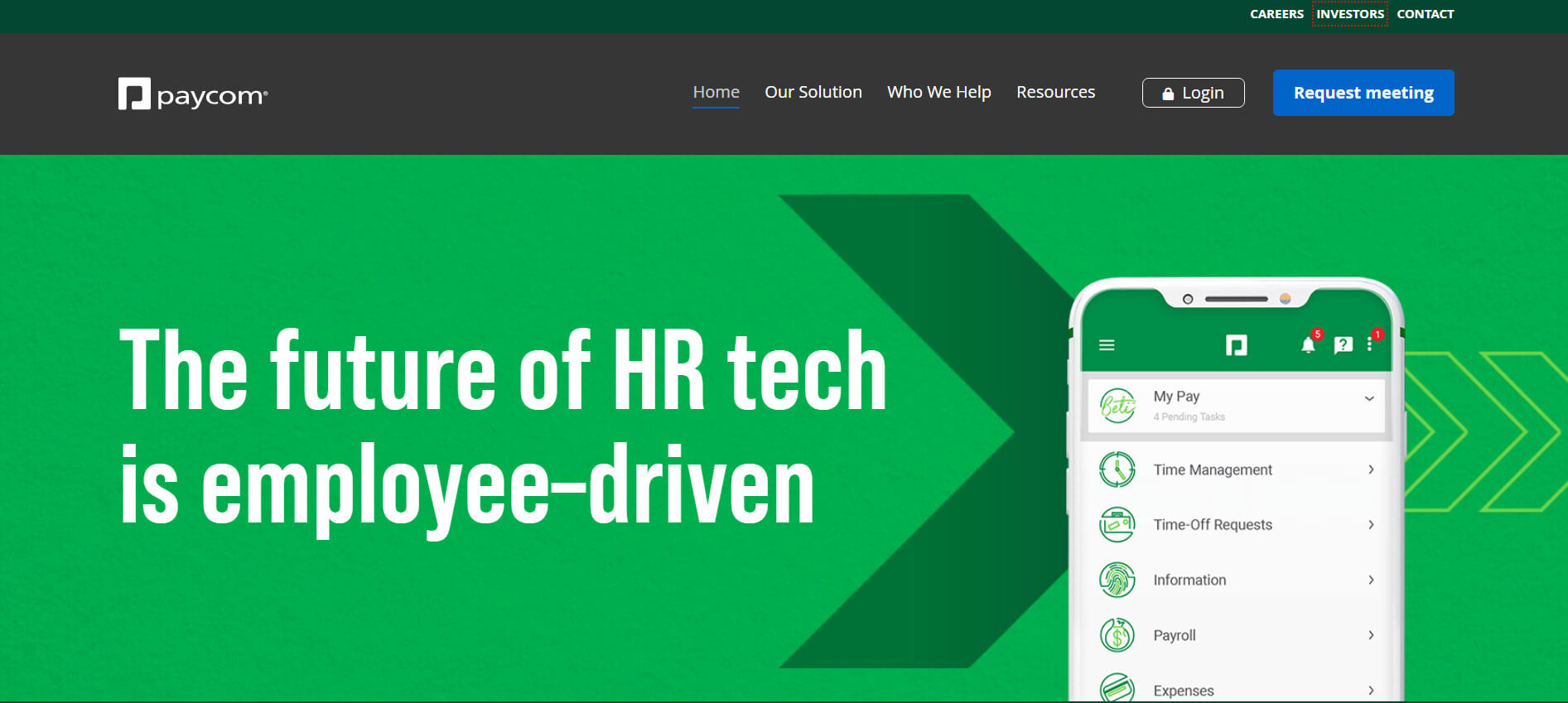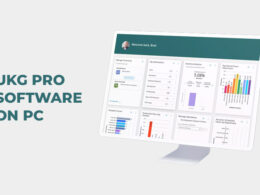Workforce management software is a type of software that is used by companies to better manage their workforce. It helps with scheduling, time tracking, and payroll.
WFM tools are becoming more important in the human resource management industry because they help to keep track of the company’s assets and it also helps the company stay compliant with labor laws.
Every business needs a workforce management software to make sure that the company is running smoothly and employees are happy. HR software is not just for big companies, it can also be used by small businesses or even freelancers working from home.
The HR software should be able to automate all of the tasks that are repetitive and tedious so that the HR team can focus on more important tasks like managing benefits, onboarding new hires, payroll or performance reviews.
Here are five workforce management software that will help you manage your employees and their data effortlessly.
What is Workforce Management Software?
Workforce management software is an invaluable tool for businesses of all sizes that helps them streamline their operations and manage their employees more effectively.
It offers a comprehensive suite of features and functions that allow employers to track employee attendance, schedule shifts, monitor performance, plan resources, analyze labor costs, and much more.
For example, if an employee is sick or on vacation they will be able to quickly fill in the shift with someone else who can do the job. The software also makes it easy to review performance data so companies can make better decisions when hiring or promoting workers.
Well, there are so many reliable workforce management software are available in the market such as; UKGPro, Paylocity, ADP Workforce Now, Bamboohr, etc.
With the right WFM solution in place, organizations can improve productivity while also reducing labor costs.
From small businesses to large multinational corporations – everyone stands to benefit from implementing a workforce management system.
5 Best Workforce Management Software for Small to Medium-Sized Businesses
The best workforce scheduling software is the one that is easy to use, affordable, and can easily be customized to suit the needs of your business.
To help you find the right one for your business, we have compiled a list of the five best workforce management software for all size of businesses.
1) Paylocity

| Users | Industries | Market Share |
| HR Manager (HM) | Non-Profit Organization Management | 72% Mid-Market |
| Human Resource Manager (HRM) | Hospital & Health Care | 23% Small-Business |
Paylocity offers an HR platform that includes payroll, benefits, time and attendance, talent management, and compliance solutions for global organizations. The company also offers a variety of workforce management solutions for companies with hourly workers including scheduling, overtime pay rules, labor analytics, employee self-service and access to mobile applications.
Paylocity has more than 28,000+ clients in different countries.
2) ADP Workforce Now

| Users | Industries | Market Share |
| HR Manager (HM) | Non-Profit Organization Management | 62% Mid-Market |
| Human Resource Manager (HRM) | Hospital & Health Care | 21% Enterprise |
| Government and Education | ||
| Retail | ||
| Manufacturing | ||
| Construction |
ADP Workforce Now improves the efficiency of workforce management. It designed for businesses to manage their employees, projects and organisational strategy. With this software, the user can assign tasks across teams, coordinate with customers and prepare for unexpected events.
The software is appropriate for any business with a need to manage their workforce and the tasks it needs to complete. It can be used by small businesses, large international corporations, universities, non-profit organisations and government entities.
When it comes to payroll, HR management, benefits, recruitment and more – you don’t want to run multiple separate systems and then switch between them every time. ADP Workforce Now is a single system that adapts quickly to your needs.
Managing staff was never easier. ADP allows you to track HR information, as well as make data-driven decisions and help manage your workforce by giving leaders, managers and workers the tools they need to have a fulfilling experience.
3) BambooHR

| Users | Industries | Market Share |
| HR Manager (HM) | Computer Software | 64% Mid-Market |
| Human Resource Manager (HRM) | Information Technology and Services | 30% Small Business |
BambooHR is a workforce management software that helps HR professionals save time and money. It is designed to be easy-to-use, scalable, and affordable.
The software helps you manage your entire workforce by providing real-time insights into the status of your employees and the company’s performance. With features like finding, hiring, onboarding and simplifying payroll information and tracking hours to capture the best benefits possible.
BambooHR is a recipient of the 2022 Best HR Software Award, it helps you organize data, automate tasks and easily maintain staff-related information—all in one place.
By integrating BambooHR with your existing HR software, you can focus on what matters most—growing your people, improving the employee experience, and taking your organization forward.
This HR software is specifically designed to meet the HR needs of tech companies trusted by industry giants like Fab, Fitbit, Klout, FreshBooks, and Squarespace. It has over 20,000+ users in 150 countries.
4) UKG Pro

| Users | Industries | Market Share |
| Payroll Manager (PM) | Hospital and Health Care | 50% Mid-Market |
| Human Resource Manager (HRM) | Financial Services | 47% Enterprise |
UKG Pro is a cloud-based HR software that provides payroll and workforce management solutions for small and medium-sized businesses. It has a user-friendly interface that makes it easy to use for new users as well as experienced professionals.
This workforce management software combines powerful HR technology with robust payroll functionality and deeper workforce management capabilities. Helps customers better manage their business through AI-powered recommendations that show when and where your people are needed. You’ll find increased flexibility and productivity for your people, as well.
UKG Pro has 70,000+ customers worldwide enhancing their employee management task with greater flexibility and cutting-edge tools that this HR software offers.
Check out our detailed UKG Pro login guide.
5) Paycom

| Users | Industries | Market Share |
| Human Resource Manager (HRM) | Hospital and Health Care | 74% Mid-Market |
| Director of Human Resources | Non-Profit Organization Management | 16% Small Businesses |
| Dealerships | ||
| Manufacturing | ||
| Education | ||
| Hospitality | ||
| Technology | ||
| Religious Organisations | ||
| Financial Institutions and Agencies |
The Paycom software is a workforce management software that will help you manage your employees and their pay, benefits, and HR information.
It has a range of features to make it easy for employers to manage their workforce. This includes, A suite of HR tools that can be customized to meet the needs of any size business, Customizable employee self-service portals, Flexible timekeeping options, Employee time off requests and approvals with automated notifications, Integrated health benefits administration, and much more.
Paycom HR software is designed to make your company much more efficient. It allows HR professionals to organize and oversee every one of their employees in a single place, which frees up time for other important aspects of the business.
Paycom was the first company to take payroll online and theye continue to lead the industry today with their unique solutions for an easy, peace-of-mind payroll process that ensures employees are paid accurately and on time.
Approximately, 33,800+ users are using Paycom solutions worldwide to manage their workforce effortlessly.
Benefits of Using Workforce Management Software
Managing a workforce can be a challenging task, especially when it comes to scheduling shifts, tracking employee attendance, and managing time-off requests.
With the use of the right workforce management software, companies can streamline their workforce management process and save time, money, and increase productivity.
Here are some of the key benefits of using workforce management software:
Increased Productivity
Workforce management software helps streamline processes and automate tasks that would otherwise be done manually. This allows employees to focus on more important tasks and increase their overall productivity.
Here are some specific benefits of using workforce management software to streamline processes and automate tasks:
- Efficient Scheduling: Workforce management software provides managers with an intuitive and automated scheduling process which significantly reduces the time and effort required to create and manage employee schedules. This ensures that available resources are allocated efficiently and in line with business goals.
- Accurate Time & Attendance Tracking: With workforce management software, time and attendance tracking is automated, ensuring the accuracy and completeness of employee records. This feature eliminates the need for manual tracking, mitigating errors and compliance issues.
- Real-time Data and Analytics: The WFM software captures real-time data, providing managers with insights into aspects of operation such as employee performance, attendance trends, and labor costs. These insights can help managers make data-driven decisions and identify issues in real-time that require attention.
- Automated Reporting: The software generates reports automatically, allowing managers to provide timely operational and performance data to stakeholders. This can help businesses identify areas of improvement and make informed decisions to optimize business operations.
- Streamlined Payroll Processing: Workforce management software streamlines payroll processing by automating the calculation of employee salaries, tax withholding, overtime, and benefits. This saves time and reduces errors, streamlining the payroll process.
Combined, these benefits create a more efficient and data-driven work environment, where employees are empowered to be productive while managers have real-time insights into business operations.
Enhanced Communication
Workforce management software not only improves communication between employees and managers but also streamlines the process of managing schedules and time-off requests, saving time and eliminating errors.
Here are some specific benefits of the communication features of workforce management software:
- Centralized Communication: Employees can use a single platform to communicate with managers, enabling fast and efficient communication while ensuring important messages aren’t lost in email inboxes or chat logs.
- Instant Feedback: Managers can provide real-time feedback to employees, enhancing performance and productivity.
- Improved Collaboration: With workforce management software, employees and managers can collaborate more efficiently on projects and tasks, leading to better results and outcomes.
- Higher Engagement: Because workforce management software provides employees with more control over their schedules and the ability to stay informed about upcoming events, they may feel more engaged and invested in their work.
- Compliance with Labor Laws: By providing a digital record of time-off requests, shift changes, and absences, workforce management software can ensure compliance with labor laws. This reduces the likelihood of disputes and legal issues, improving employee relations and increasing employee retention.
Enhanced Compliance
Compliance with labor laws is a critical aspect of workforce management, and workforce management software can be an invaluable tool for ensuring compliance.
Here are some specific benefits of using workforce management software to maintain labor law compliance:
- Automated Time and Attendance Tracking: Workforce management software can track employee hours worked accurately and comprehensively. This can help businesses ensure compliance with labor laws that require employees to be paid for all hours worked and prohibit working beyond certain limits.
- Overtime Management: The software can help manage overtime pay and ensure compliance with labor laws that require businesses to pay their employees for overtime work. This feature can prevent compliance issues and save businesses from legal action.
- Automatic Alerts: Workforce management software provides automatic alerts when compliance issues arise, enabling managers to take corrective action quickly. Regular alerts can be set up to monitor compliance with labor laws and track operational performance.
- Reduced Manual Error: Processing labor-related data manually can result in human error and audits, leading to penalties and increased costs. With workforce management software, you can ensure accurate reporting, reduced errors, and overall better compliance performance.
By using workforce management software to automate labor tracking and to provide real-time insights and alerts into compliance issues, businesses can avoid fines and penalties, improve compliance performance, and ultimately protect the health of their organization.
Reduced Labor Costs
Workforce management software offers businesses significant opportunities to reduce labor costs and has proven to be a valuable investment.
Here are some specific benefits of using workforce management software to optimize costs:
- Automated Payroll Processing: The WFM software can automate the calculation of employee salaries, tax withholding, overtime, and benefits. By streamlining the payroll process, businesses can reduce the time spent on manual calculations and the likelihood of errors, ultimately saving money on labor costs.
- Optimized Staffing Decisions: Workforce management software can help managers identify overstaffed or understaffed areas of their business that may require adjustments to reduce labor costs. By monitoring employee performance and schedule patterns, the software can help allocate resources more effectively.
- Balanced Workloads: The software can be used to reassign staff members to different roles based on their working hours, skills, and availability. This helps balance workloads and reduce overtime costs.
- Real-Time Analytics and Reporting: Workforce management software provides real-time data and analytics. Managers can analyze labor costs and identify areas where they can reduce costs or allocate resources more effectively.
By utilizing WFM solutions to optimize labor costs, businesses can gain a significant competitive advantage.
Remote Workforce Management
With the rise of the remote workforce, workforce management software has become a crucial tool for managing and measuring employee performance.
Here are some specific benefits of using workforce management software to manage remote employees:
- Real-time Communication: Workforce management software enables real-time communication between managers and remote employees. This ensures that everyone is kept up-to-date on task assignments, progress updates, and important events.
- Collaboration: The software provides a platform for remote employees to collaborate and work together on projects or tasks. This collaboration improves teamwork and increases productivity.
- Task Assignment: With workforce management software, managers can assign tasks to remote employees and track their progress. This ensures that everyone is working toward the same goal and that tasks are completed on time.
- Accountability and Productivity: By tracking employee progress and performance, workforce management software helps managers ensure that remote employees are meeting their deadlines, fulfilling their responsibilities, and staying productive.
- Performance Measurement: Workforce management software allows managers to measure employee performance and track key performance indicators (KPIs). This data can help managers identify areas where employees may need additional training or support, and provide feedback to remote employees in order to enhance their performance.
By leveraging these benefits, businesses that manage remote employees can ensure that their remote workforce is effective, productive, and ultimately contributes to the success of the organization.
Key Features and Functions
The key features and functions of workforce management software include:
- Employee Scheduling: This feature allows businesses to create schedules for their employees based on their availability and preferences. It also enables managers to easily adjust schedules when needed.
- Time & Attendance Tracking: This feature allows businesses to track employee hours worked and absences, as well as manage overtime and other labor costs.
- Legal Compliance: Workforce management software can help organizations stay compliant with labor laws by providing them with up-to-date information about regulations and requirements.
- Reporting & Analytics: This feature allows businesses to generate reports on employee performance, labor costs, and other metrics. It also provides insights into how they can improve efficiency and productivity.
Types of WFM Software
There are several types of Workforce Management Software (WFM) available in the market that can help businesses streamline their workforce management processes.
Here are some of the most common types:
Time and Attendance Management Software
This type of software allows businesses to track employee work hours, absences, and leave requests electronically.
This software can help track employees from various locations and calculate their pay.
Example: Kronos Workforce Ready
Scheduling Software
Such software enables managers to create and maintain optimized employee schedules in advance.
It allows businesses to maintain operations even in periods of high demand or emergencies.
Example: SocialSchedules Software
Task Management Software
This type of software helps managers assign and track employee tasks and goals.
It ensures that tasks are completed on time and that team members are aware of their roles and responsibilities.
Example: Trello
Performance Management Software
This type of WFM software enables managers to track and evaluate employee performance.
It involves tracking employee objectives, providing feedback to employees, and reviewing employee performance results.
Example: BambooHR
Leave Management Software
This software allows businesses to manage employee vacation, sick leave, personal days, and other types of leaves.
It automates the process of leave requests, approvals, and tracking, reducing errors and ensuring compliance.
Example: Breathe HR
Compliance Management Software
Such WFM software ensures that a business is complying with industry-specific labor laws and regulations.
It provides tools that allow managers to monitor compliance, audit employee records, and generate reports.
In brief, different types of Workforce Management Software are designed to help businesses automate specific aspects of the workforce management system.
Example: Convercent
Cost Considerations for Implementing a WFM System
Implementing a WFM system can bring significant benefits, including increased productivity, improved compliance, and better employee engagement.
However, businesses need to consider the costs associated with implementing and maintaining the system.
Here are a few cost considerations to keep in mind:
- Upfront Costs: The cost of implementing the WFM system includes the software license costs, initial setup, and training. Depending on the size of the organization and the complexity of the system, these costs can vary from a few thousand to hundreds of thousands of dollars.
- Ongoing Costs: In addition to the upfront costs, there are ongoing expenses associated with maintaining the WFM system. This includes software updates, maintenance, and technical support.
- Integration Costs: If the WFM system needs to integrate with other systems within an organization, integration costs can add up quickly. This includes customizations, configurations, and development costs.
- Hardware Costs: Depending on the type of WFM system, there may be hardware costs to consider as well. This includes server hardware, network infrastructure, and other hardware components.
- Training and Support Costs: The cost of training staff to use the WFM system and provide support to employees also varies. This includes online training programs, technical support, and ensuring that everyone is up-to-date with new features and changes in the software.
Taking these costs into consideration, it is important for businesses to weigh the benefits of implementing a WFM system against the costs of implementation and maintenance.
However, in the long run, the benefits typically outweigh the costs, leading to a more efficient, productive, and successful workforce.
Best Practices for Using WFM Solutions Effectively
Deploying a Workforce Management (WFM) solution provides a significant opportunity for businesses to streamline their operations, engage their employees, and boost their bottom line.
Here are some best practices for using WFM solutions effectively:
Align WFM Solutions with Business Goals
Ensure that the WFM solution you choose aligns with your company goals.
Consider which features and functionalities are most critical for your business and identify how the WFM software will fit around your organization.
Provide Sufficient Training
For successful WFM adoption, it’s crucial to offer sufficient training to all users before implementation.
This includes administrative and end-user training. This ensures that everyone gets familiarized with the system and understands how to use it effectively.
Simplify the Process
Workforce management solutions should be simple and easy to use. The system should be intuitive, user-friendly, and incorporate readily into day-to-day business routines.
This can significantly increase employee engagement and adoption rates.
Focus on Data Quality
WFM solutions rely on accurate data entry and analysis. To ensure proper functionality, data should be clean, consistent, and entered timely.
Embrace Continuous Improvement
Effective WFM deployment requires a continuous improvement strategy.
Regular data and performance analysis are essential for diagnosing issues and identifying areas where improvements can be made.
Ensure Integration with Existing Systems
The WFM solution needs to integrate with existing systems and other HR software, such as payroll or benefits software.
This will ensure that timely, accurate data is shared between systems which is vital for efficient business operations.
Successful WFM adoption means fully utilizing the software’s capabilities and extracting the most significant business value.
Moreover, by putting these best practices into effect, businesses can achieve desired outcomes, work smarter, and get results across their organization.
Wrapping it up…
In brief, there are many workforce management software options to choose from, and each has unique features. It is up to you to decide which one suits the best. The right HR software will help you to create a better workplace by enhancing productivity, harmony between employer and employees, cost optimization, and time utilisation.
So pick one from our recommendations to leverage the power of modern HR software.








